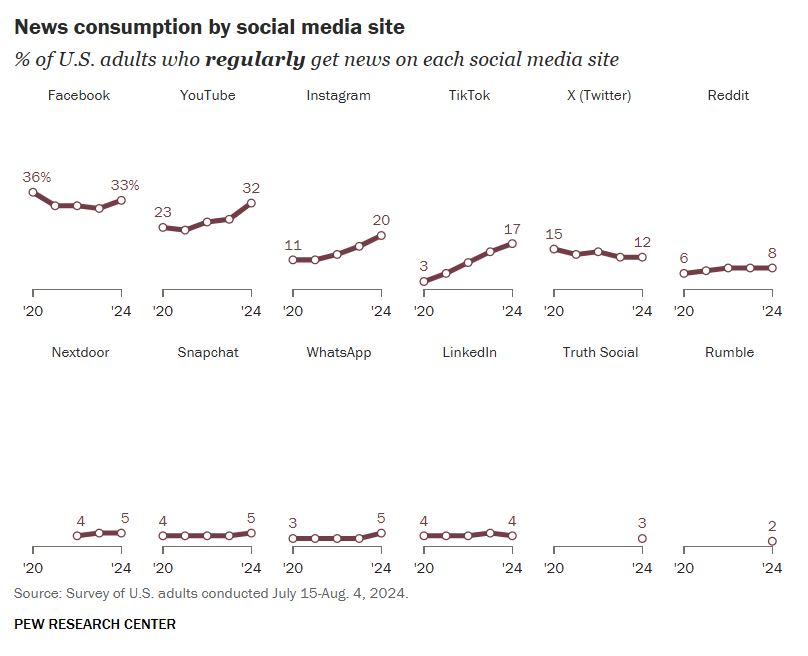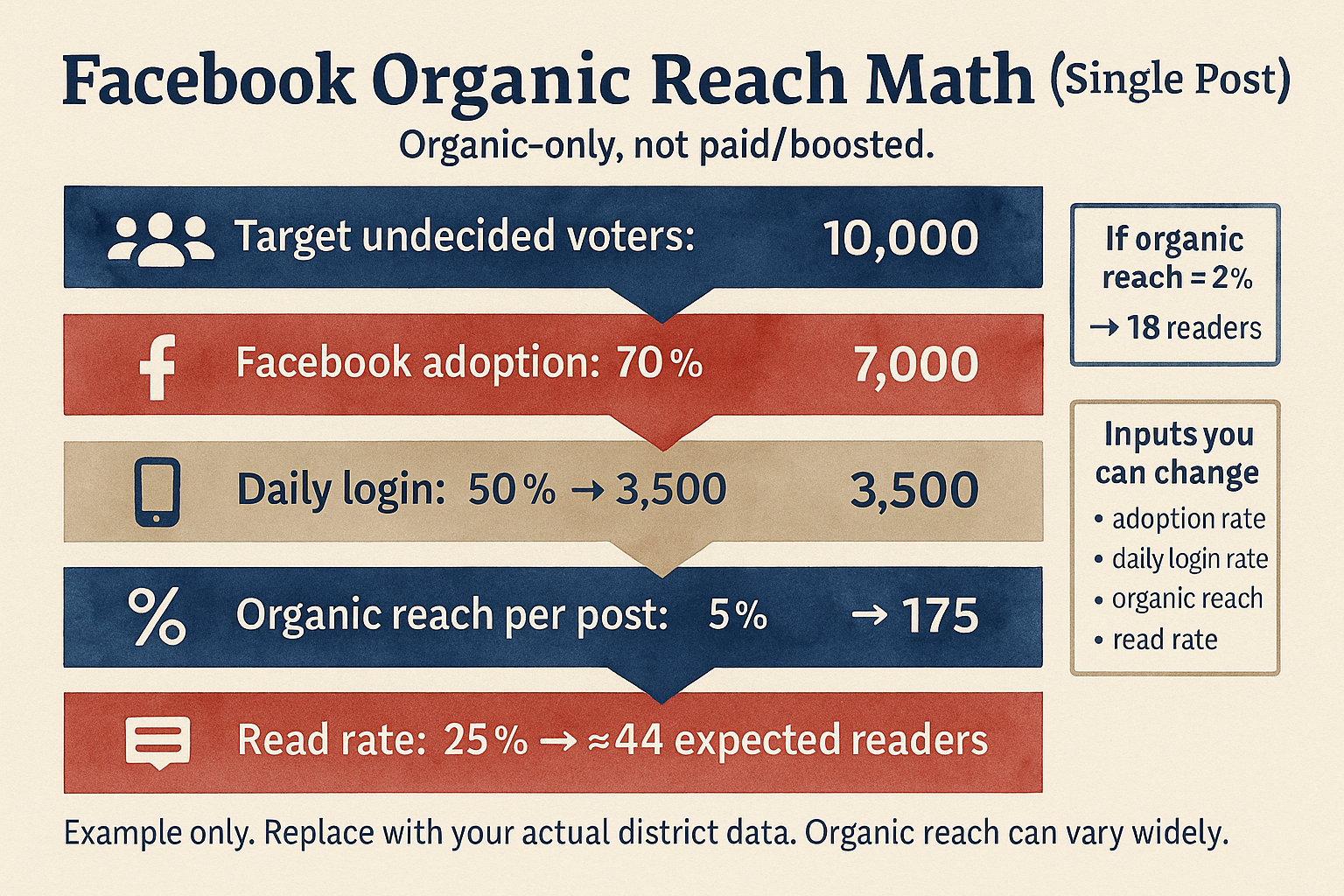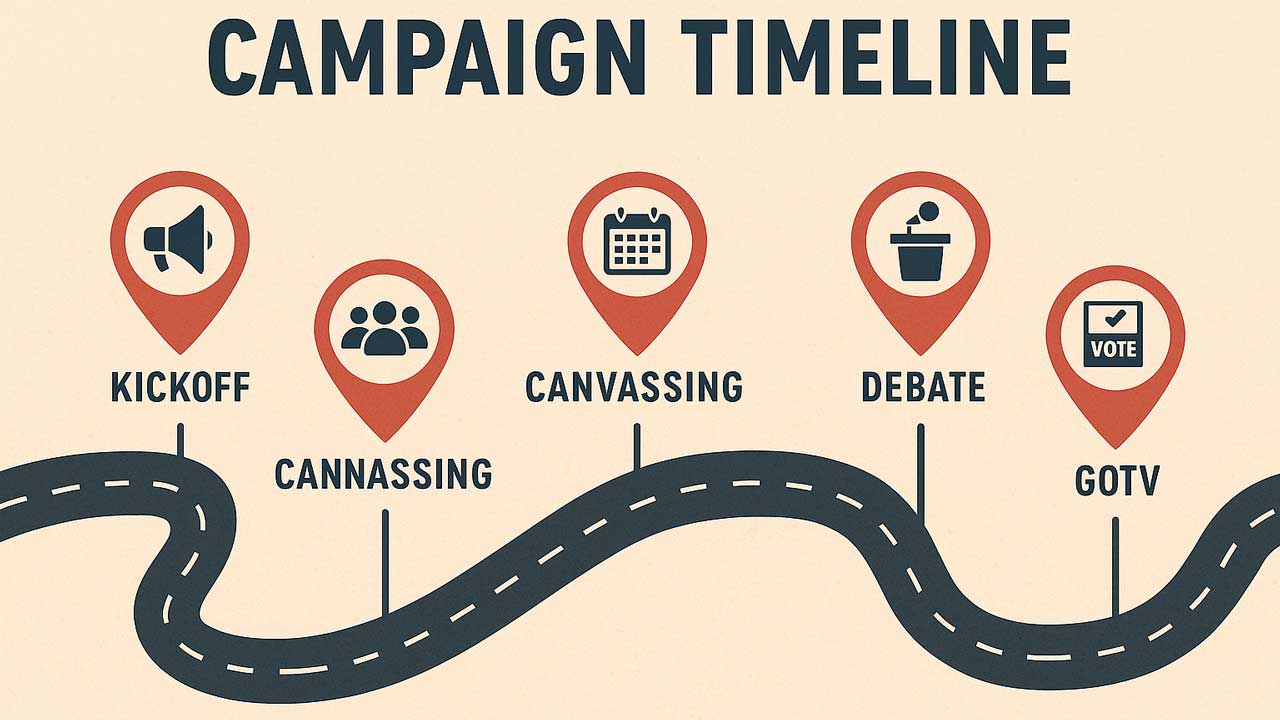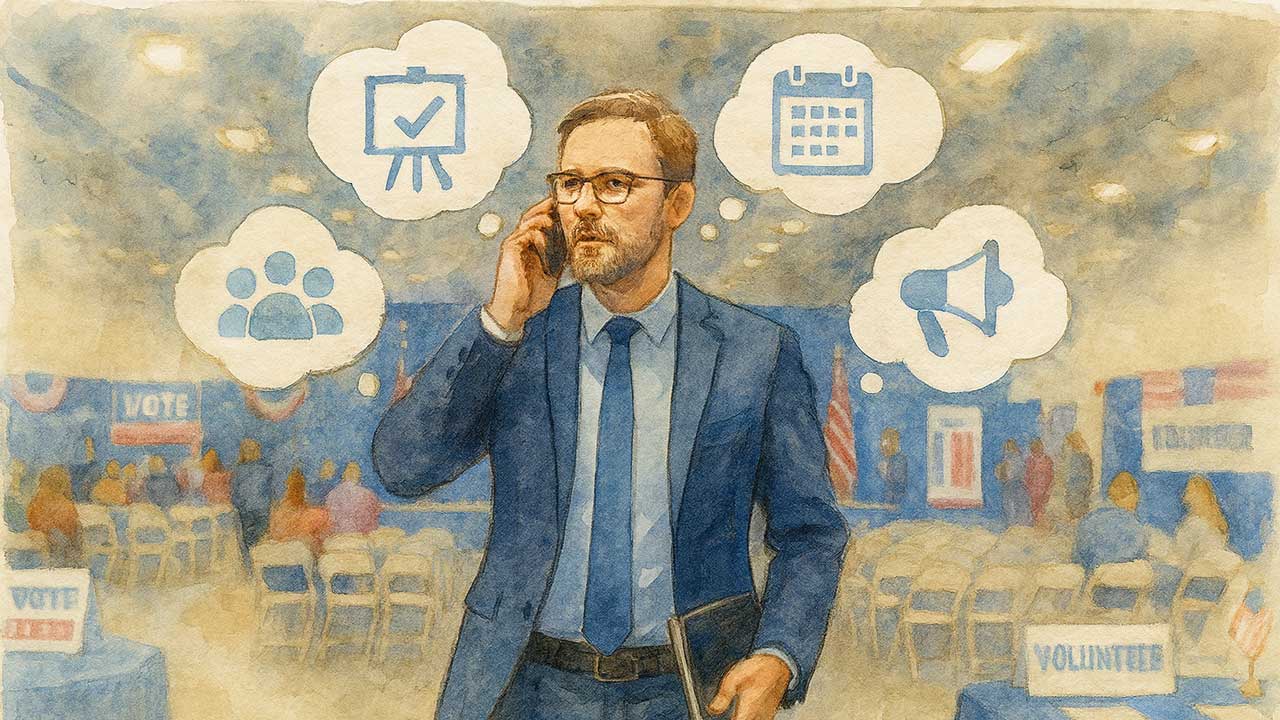The Candidate Strategy to Execute Social Media with Precision and Turn Critics into Supporters
In modern politics, social media has become the default campaigning tool. It promises low-cost outreach, immediate visibility, and a direct line to voters. Every candidate, from local school board hopefuls to presidential contenders, feels the need to have a presence on Facebook, Instagram, TikTok, or X.
But while social media is powerful, it is also hazardous. Unlike yard signs, radio ads, or mailers, social platforms allow the public to reply instantly, and those replies can spread faster than the campaign’s original message. For candidates, success on social media requires more than casual posting. It requires strategy, discipline, and a willingness to engage critics in ways that can actually strengthen the campaign.
Social Media: The First Go-To Messaging Tool (But Not the Best)
The first instinct of almost every candidate is to jump onto social media. It makes sense: the platforms are accessible, familiar, and inexpensive compared to traditional advertising. A single post can theoretically reach thousands of voters.
The problem is that the reality rarely matches the theory. Social media is an endless feedback loop, and posts are easily buried under competing content. A poorly managed account can amplify mistakes rather than build support. This is why campaigns must approach social media as a structured component of the overall strategy; they should not “wing it” but execute with precision.
The Facebook Trap
For years, campaigns have defaulted to Facebook as their central hub. The assumption was that most voters were there and that posts would reliably reach them. That assumption is now wrong.
According to Pew Research Center, 30 percent of U.S. adults have never used Facebook at all. And among those who do, usage is declining. Mark Zuckerberg testified in 2025 that Meta’s share of the time people spend on social media has “gone down meaningfully,” with much of the interaction shifting to private messaging apps. Independent data show TikTok users spend about 108 minutes per day on the platform, compared to 63 minutes on Facebook and 48 minutes on Instagram.
What’s more, the portion of content people see from friends on Facebook and Instagram has dropped noticeably.
Meta’s own slides from their antitrust trial showed that Facebook’s share of friends’ content fell from 22 percent to 17 percent, while Instagram’s fell from 11 percent to 7 percent. In other words, even when voters are on Facebook, they are less likely to see posts from people and pages they know.
Pew’s 2024 survey adds another dimension: while more than half of U.S. adults say they sometimes get news from social media, only about one third regularly do so on Facebook or YouTube. Smaller but growing shares now rely on Instagram at roughly 20 percent, TikTok at roughly 17 percent, and X at roughly 12 percent.
(Below) 2024 graph published by Pew Research Center, describing the total news consumption by Americans on each social media platform.

Quick math for a single Facebook post (organic only, not paid advertising)
This calculation is strictly for organic distribution in the feed. It does not include paid or boosted reach. A simple way to estimate the odds that a post is actually read is to apply math to the funnel stages. The math looks like this:
Reach estimate = target voting population × Facebook adoption rate × daily login rate × organic reach per post (organic only) × read rate.
Example for a small local race: 10,000 undecided voters × 0.70 adoption × 0.50 daily login × 0.05 organic reach × 0.25 read rate = about 44 readers. If organic reach is closer to 2 percent, expected readers drop to about 18. If you manage 10 percent organic reach, expected readers rise to about 88. Even in the best organic scenario, this is still a small slice of the electorate.
The lesson for campaigns is clear: only a small fraction of the voter community is likely to see, let alone read, any given Facebook post. Relying on a single platform is no longer viable. Using social media effectively requires a strategy unto itself, tailored to different platforms, audiences, and algorithms.

Two Golden Rules for Candidates Online
Despite these challenges, candidates can succeed if they follow two golden rules.
First, own what you publish. Nothing ever truly disappears from the internet. Deleted posts live on in screenshots. If a candidate is not sure whether something is right or wrong, they should not post it; frankly, they should not be running for office.
Second, never delete posts because of criticism. Deletion often looks like an admission of guilt. Instead, candidates should state their position clearly, explain briefly, and move on. This projects steadiness and transparency.
Engaging Critics: The Charlie Kirk Way
Criticism is inevitable online. The worst thing a candidate can do is respond defensively in a public forum. A more effective strategy is to treat critics as potential allies.
Borrowing from activist Charlie Kirk’s approach, candidates can acknowledge a critic’s claim, politely state that the account is inaccurate, and offer to meet in person for coffee or tea to discuss further. Then they wait. No arguing. No piling on. Just an invitation.
Campaigns that have tried this approach report surprising results: about 60 percent of critics agreed to meet. Many left the meeting with a clearer understanding of the candidate’s position and, in some cases, became volunteers or donors themselves.
Guidelines for Candidate Meetings With Critics to Address Concerns
Personal engagement works best when it is structured. Candidates should:
-
Prepare by reviewing their positions and gathering supporting information.
-
Listen more than they talk, focusing on clarifying misunderstandings rather than convincing.
-
Stay safe by documenting who the meeting is with, meeting only in public places during daylight, having a staffer present when possible, and checking in with your campaign manager before the meeting to confirm time and location.
-
Immediately debrief your campaign manager or a designated staff member after the meeting to share what was learned and confirm safety.
Occasionally, critics bring forward new information. When that happens, candidates should verify it with independent sources. Refining a position in light of new facts is not weakness; it is leadership.
The Bigger Picture
Social media is not just about broadcasting. The real strength lies in listening, clarifying, and building bridges, even with critics. That requires discipline, patience, and a willingness to engage in one-on-one conversations.
Candidates who own what they post, avoid defensiveness, and use social media strategically will build stronger campaigns. Those who rely solely on Facebook, delete posts in panic, or fight with critics online will undermine themselves.
Do Not Wing It
Though social media is here to stay, it’s not the simple campaign tool it once was. Facebook no longer dominates, and posts reach only a small slice of the intended audience. To succeed, candidates must diversify, plan platform by platform, and engage critics respectfully.
Do not wing it. Build a precise, data-driven plan for social media with clear goals. Define content pillars, posting cadence, platform mix, and when to use paid versus organic. Set a response protocol. Measure results. Execute, learn, and improve.
In the end, social media should be treated not just as a megaphone, but as an invitation to clarify, to listen, and to turn skeptics into champions.



